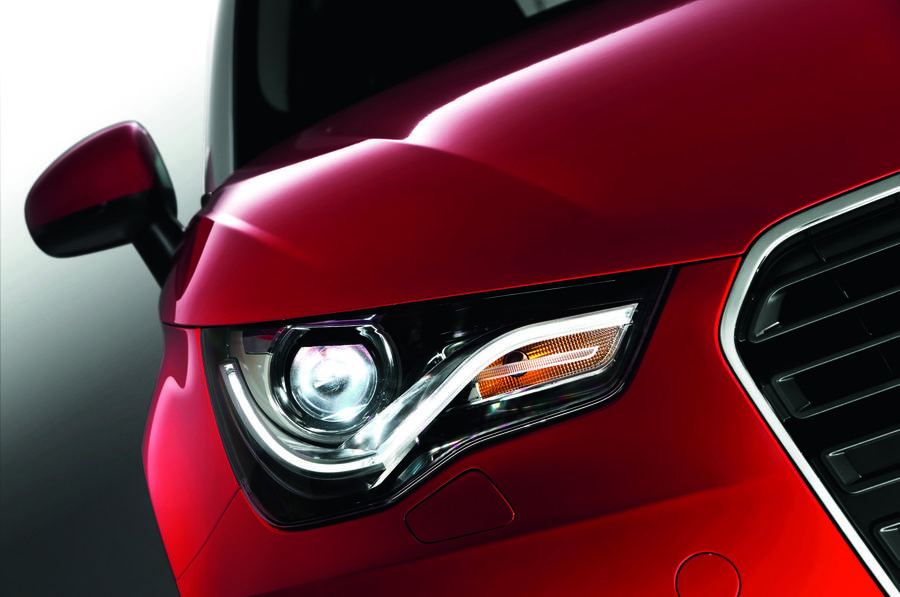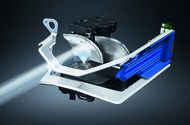Advanced lighting technology, like this Audi A8 laser spotlight developed by Hella, makes night driving safer but is an enabler for EV technology as well
Light-emitting diodes cast a brighter glow and use less energy, but there are other benefits as well
It’s an often overlooked fact that the headlights you turn on at night to read the road ahead are directly linked to what comes out of the tailpipe or the range of an EV. Why? If all the lighting on a car, including indicators, is by LED, the power consumption saving compared with using old-school halogen is 60%, and cutting that reduces fuel consumption and emissions.
The colour temperature (measured in kelvin and literally the colour of the light) is much whiter than a halogen bulb, which is yellow by comparison, giving superior forward vision. Audi quotes 5500 kelvin for its LED headlights, which, it says, is close to daylight.
LEDs – light-emitting diodes – are classified as semi-conductors, so named because they are more conductive than something like glass but less than a metal, like copper. Diodes were originally developed as electronic components for electronic circuitry and act like a valve, allowing current to flow in one direction but not the other. If certain materials are added to the semi-conductor in a process called ‘doping’, the material can glow (fluoresce) when the diode is live, giving rise to the LED we all know and love. The type of LED used in headlights emits a mixture of red, green and blue light, which the eye sees as white.
Apart from the free lunch scenario – lots of light for not much energy – LEDs have other benefits, too, such as the potential to shape the beam to light only specific areas of the road. This trickery, known as LED matrix lighting, is made possible by using an array of LEDs in a headlight arranged in separate ‘pockets’ or ‘tunnels.’ Selective use of the LEDs can alter the shape of the beam so that the light pattern can be cut off vertically and horizontally. For example, instead of a traditional dip beam, the road in front of the car on the nearside can remain illuminated further ahead, while that on the offside can be left in relative darkness to avoid blinding oncoming cars.
A typical ‘adaptive front lighting system’ like this can be augmented on the priciest systems with laser modules for long-range lighting. If that sounds alarming, it isn’t. Lethal lasers are not beaming out of the front of the car like something out of Captain Marvel. The laser modules simply provide a light source. On the Audi A8, for example, the laser module emits a blue light that passes through a phosphor converter to become a 5500-kelvin white light. The beam bounces off a mirror, projecting a spotlight beam hundreds of metres ahead, is enabled at 43.5mph and dims automatically if a camera behind the windscreen detects oncoming traffic.
The fancy stuff – those solid bands of light on and around the rear lights of new cars – are created by organic light-emitting diodes. Each one consists of a few layers 200 times thinner than a human hair. LEDs are used on interiors, too, for creating the ambient lighting systems. A must-have rather than nice-to-have technology, LED lights not only make driving at night safer, but they’re also an essential part of the engineer’s toolbox.
It’s a gas, gas, gas

Halogen and xenon lights are still in play but maybe only for as long as it takes to drive down the cost of LED and laser lights. Power consumption of xenon (or high-intensity discharge, HID) is mid-way between halogen and LED and light is generated by striking an electric arc through xenon gas. Halogen bulbs are filled with inert gas and a small amount of a halogen-like iodine. They have a tungsten filament that gives off light and heat when electricity is passed through it.
Read more
Under the skin: How Tesla is making cars think like humans
Source: Autocar
